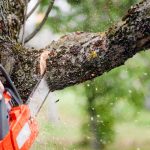Trees and shrubs provide us with shade, clean air and clean water. When watering during the summer months, these are the plants you want to target.
During the summer months, it’s best to focus your watering on plants that provide the greatest economic and environmental benefit to your home — trees and shrubs. In addition to increased property values, these plants provide shade, clean air and clean water.
In most cases, well-established trees don’t need much supplemental water. However, newly planted trees and shrubs don’t have a root system large enough to obtain sufficient water to survive during periods of extreme drought. Consistent applications of water are recommended via the 3-2-1 method.
Mature trees require supplemental water only if normal rainfall is deficient in spring and early summer, or from March through July. Watering from August through October is not as important to long-term health. Overwatering is often as detrimental as not watering enough.
In confined spaces, such as between two driveways where soil is often limited, ¾ inch of water applied twice a month is recommended. In most areas like front and backyards, one inch to one and a half inches a month will suffice. Normal rainfall fulfills the majority of needs. In both circumstances, a slow application is necessary to create a large water profile in the soil. Location is also important. For newly planted trees, apply only to the root ball. For mature trees, target the inside and outside of the drip line.
Water isn’t always the most important factor in tree health. It also helps to recreate the natural environment with frequent additions of compost and mulch. Compost is thoroughly decomposed organic matter from manures, vegetation or both that resembles rich soil. Compost may be incorporated into the soil. Mulch may be organic (wood chips, pecan shells, pine bark) or inorganic (small rocks, decomposed granite), but generally it’s organic material that has not decomposed.
Mulch is never ever put into the soil, but rather always placed on the surface. A nitrogen deficiency will result if too much carbon — the mulch — is incorporated into the soil, resulting in small, pale green leaves and reduced growth.
Apply a half-inch of compost in the spring and fall, and two inches of mulch in May and September. Cover as much of the root zone as possible to encourage roots to expand and soil to retain moisture.
Treat your trees right and they will treat you right for decades.




